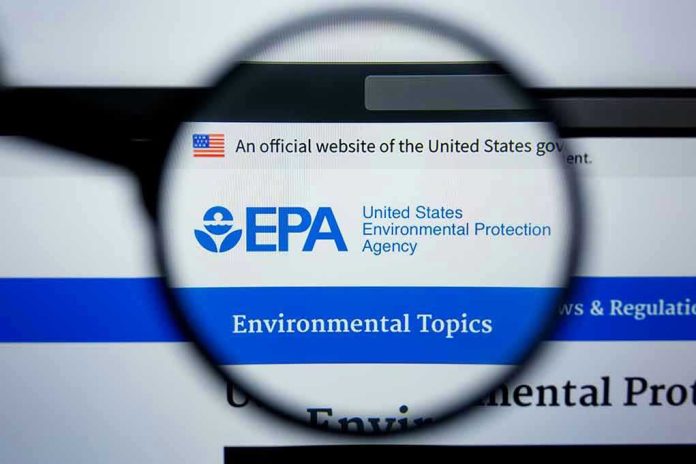
The Environmental Protection Agency’s move to rescind the Endangerment Finding could dismantle a decade and a half of climate policy and throw the U.S. into a tailspin of regulatory chaos.
At a Glance
- EPA proposes to rescind the 2009 Endangerment Finding, a key climate policy.
- This move could dismantle federal greenhouse gas regulation.
- The proposal is under review and will soon be open for public comment.
- Legal challenges are expected from environmental groups.
EPA Targets the Endangerment Finding
The U.S. Environmental Protection Agency (EPA) under the Trump administration is advancing a proposal to rescind the 2009 Endangerment Finding. This pivotal regulatory determination classified greenhouse gases (GHGs) as a threat to public health and welfare, enabling the federal government to regulate these emissions under the Clean Air Act. This decision allowed for the implementation of extensive climate-related regulations that have been in place for over a decade. Now, with President Trump at the helm once more, the administration seeks to eliminate this legal foundation, potentially dismantling years of climate policy.
The original Endangerment Finding, issued after the Supreme Court’s ruling in Massachusetts v. EPA, was a cornerstone for major climate regulations. It allowed the regulation of GHG emissions from both vehicles and stationary sources like power plants. Conservatives and industry groups have long criticized this finding, arguing it overreaches EPA authority and imposes economic burdens. The Trump administration, during its previous term, rolled back many specific regulations but did not attempt to rescind the finding itself until now.
Legal and Historical Context
The Endangerment Finding has faced legal challenges throughout its history, but it has remained the legal basis for regulating GHGs. Past attempts to weaken climate regulations have often been thwarted by legal challenges. However, the Trump administration’s current effort targets the legal underpinning of all federal GHG regulation, not just specific rules, which could have sweeping consequences. This move represents the culmination of longstanding conservative efforts to limit the EPA’s authority over climate issues.
Since the Supreme Court has already ruled that the EPA can regulate GHGs as pollutants under the Clean Air Act, the current administration’s proposal to rescind the finding could lead to significant legal battles. If successful, this could undermine the EPA’s capacity to regulate emissions, affecting both current and future climate policies. The proposal, submitted to the Office of Management and Budget (OMB), is expected to be published for public comment soon.
Stakeholders and Implications
The key players in this unfolding drama include EPA Administrator Lee Zeldin, who is spearheading the agency’s reconsideration of the finding, and President Trump, who issued an executive order calling for its review. The fossil fuel industry and conservative groups support this move, citing reduced regulatory costs and an agenda of energy dominance. In contrast, environmental NGOs and public health advocates oppose it, emphasizing the scientific consensus and public health risks.
If the proposal to rescind the Endangerment Finding is finalized and withstands legal scrutiny, the EPA would lose its authority to regulate GHGs under the Clean Air Act. This scenario could lead to significant regulatory uncertainty for industries currently subject to GHG rules and might result in immediate legal challenges from environmental groups and states. States with strong climate policies may step in to fill the regulatory gap, but national standards would be weakened.
Expert Perspectives and Future Outlook
Legal experts caution that rescinding the finding would remove the EPA’s legal authority to regulate GHGs, a move likely to face significant court challenges. Climate scientists continue to emphasize the overwhelming evidence linking GHGs to climate change and public health risks. Columbia Law School’s climate law experts warn that overturning the finding would contradict established science and legal doctrine.
The broader implications of rescinding the Endangerment Finding are profound. It could set a precedent for further deregulatory actions on environmental and public health protections, affect U.S. international climate commitments, and undermine investment certainty for clean energy and emissions-reduction technologies. As the nation waits for the public comment period, the stakes could not be higher for the future of U.S. climate policy and global leadership.
Sources:
Columbia Law School Climate Law Blog







